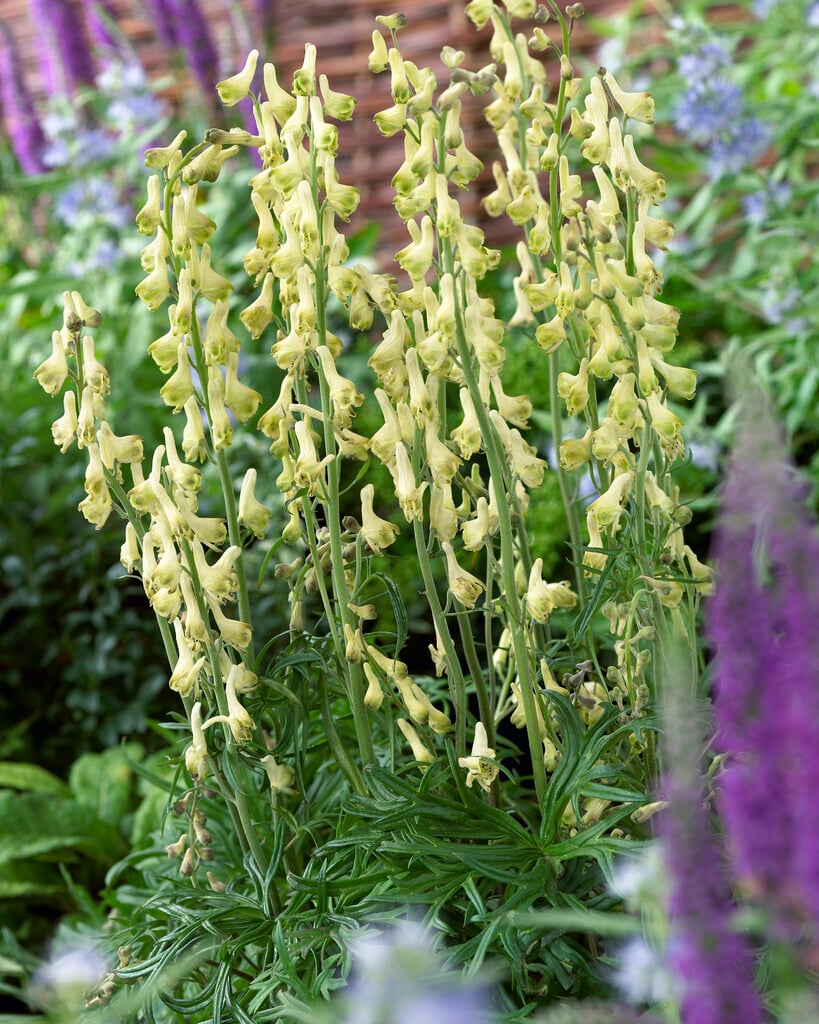Aconitum anthora
wholesome wolf's bane
An upright, clump-forming, usually hairy perennial to about 75cm tall, with rounded, deeply lobed, dark green leaves. Compact racemes of pale yellow, sometimes blue-violet hooded flowers appear in mid to late summer
Other common names
yellow helmet flowerSize
Ultimate height
0.5–1 metresTime to ultimate height
2–5 yearsUltimate spread
0.1–0.5 metresGrowing conditions
Moisture
Moist but well–drainedpH
Acid, Alkaline, NeutralColour & scent
| Stem | Flower | Foliage | Fruit | |
| Spring | Green | |||
|---|---|---|---|---|
| Summer | Blue Purple Yellow | Green | ||
| Autumn | Green | |||
| Winter |
Position
- Full sun
- Partial shade
Aspect
East–facing or North–facing or South–facing or West–facing
Exposure
Exposed or Sheltered Hardiness
H7Botanical details
- Family
- Ranunculaceae
- Native to GB / Ireland
- No
- Foliage
- Deciduous
- Habit
- Clump forming
- Potentially harmful
- TOXIC if eaten, avoid skin contact. Wear gloves and other protective equipment when handling. Pets: TOXIC if eaten, avoid skin contact - see the HTA guide to potentially harmful plants for further information and useful contact numbers
- Genus
Aconitum can be herbaceous perennials or biennials with lobed leaves and racemes or panicles of showy, hooded flowers
- Name status
Correct
How to grow
Cultivation
Grows best in deep, cool, moisture-retentive soil in partial shade, but will also tolerate most soils and full sun if soil is humus-rich and protected with mulch to ensure that it is moist throughout the growing season; use protective gloves
Propagation
Propagate by division in autumn or late winter; division every few years may encourage good flowering stems, though plants may be slow to re-establish; use protective gloves
Suggested planting locations and garden types
- Architectural
- Cottage and informal garden
- Wildlife gardens
- Flower borders and beds
Pruning
No pruning required except cutting back dead stems; use protective gloves
Pests
Generally pest-free but may be susceptible to aphids
Diseases
May be susceptible to fungal stem rot, powdery mildews, and Verticillium wilt
Love gardening
Sign up to receive regular gardening tips, inspiration, offers and more
View our Privacy Policy
Get involved
The Royal Horticultural Society is the UK’s leading gardening charity. We aim to enrich everyone’s life through plants, and make the UK a greener and more beautiful place.

